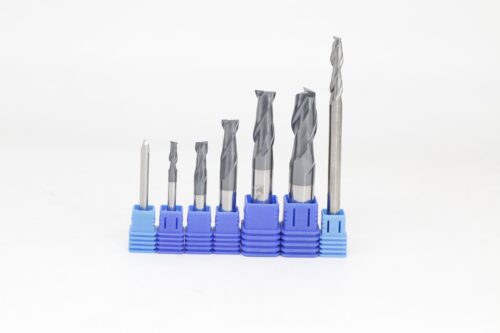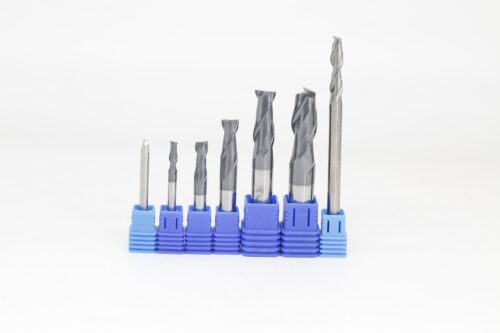What is a flat end mill
A Flat end milling cutter, also called a Square end mill, is a typical milling tool. It’s similar to a Slot drill in some applications. The cutter body is cylindrical. Its end edge is flat, with cutting edges on the circumference and end. Spiral grooves on the cutter body remove chips and transfer oil, like those on a Slot drill, ensuring smooth cutting.

We mainly use it for machining planes, grooves, cavities, and parts’ outer contours, etc., to make the workpiece obtain a specific shape and accuracy.
What is a two-blade flat end mill
The two-edge flat end mill is a kind of end mill with two cutting edges and a flat edge at the end of the end mill.
It has a cylindrical shape, and we design two spiral grooves on the cutter body to remove chips and transport cutting fluid.

In milling processing, we can carry out surface milling, slot machining, cavity machining and so on on metal or non-metal materials with high cutting efficiency.
With precise control, we can machine parts of various shapes and precision requirements.
what is the flat on a end mill shank calledi
We use this plane’s function when we install the tool.
i match this plane with the corresponding positioning structure on the milling machine spindle or the tool holder fixture to prevent the tool from rotating during the cutting process and ensure that we can accurately cut with the tool in accordance with the predetermined direction and position.
so as to ensure the processing accuracy and stability.
can flat nose end mills plunge cut
Flat end mills can usually make straight cuts.
Flat end milling cutter, that is, flat end milling cutter, its end is flat and has a certain axial cutting ability.
In actual processing, we can make it carry out a vertical downward straight cutting motion along the axial direction of the tool, and we use it for processing the cavity and groove of the flat bottom.
However, compared with specialized drilling tools, an end mill has relatively limited direct cutting ability, and we may face some restrictions when using it to cut deep holes or with large feeds.
For example, the tool wears and breaks easily, and its processing efficiency may not be as high as that of a drill.

